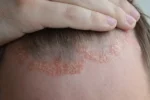Breast Augmentation Incisions: Which One is Right for You?

When you opt for a breast augmentation surgery, the most important decisions you have to make along with the guidance of your plastic surgeons is the type of incision they will use to make the insertion of the implants during the breast augmentation in Atlanta. In all cases, many plastic surgeons favor a particular approach, while others prefer to suggest a type of incision that suits each one of their patients individually.
During the breast augmentation surgery, surgeons insert the implants behind the muscles of the chest or under the breast tissue through incisions, they make carefully. Several locations or choices exist when it comes to these incisions, but it is only possible to determine the best one with help of your surgeon based on your anatomy, desired outcome, and the size or shape of the implants you choose. Here is a closer look at the most common breast implant incisions, including their pros and cons.
At a glance, the four common incisions include:
- Periareolar Incision or the nipple incision
- Inframammary Incision or the fold or crease incision
- TUBA incision or transumbilical or belly button incision
- Transaxillary incision or armpit incision
1. Periareolar Incision or Nipple Incision
When it comes to this method, surgeons such as those at Crispin Plastic Surgery make the incisions around the areola outline, the pink or brown colored area that surrounds the nipple. At this stage, the main goal of an experienced breast augmentation surgeon is to make incisions between the areola’s dark surrounding skin and this helps to minimize the visibility of the incision. According to the American Society of Plastic Surgeons, the drawback of this surgical incision is about 2-5% in which case the patient may lose a slight bit of nipple sensation and 20% say they are unable to breastfeed their babies compared to other sites of the incision. The greatest advantage of the periareolar incision is that it gives the surgeon a better control over the implant position, which leads to an accuracy of the placement of implants and minimal visibility of the scarring.
2. Inframammary Incision or the Fold or Crease Incision
Surgeons perform the incisions along the bottom of the breast in this surgery. The incision goes along the fold or crease of the breast, where the skin and breast come together. The surgeon then creates a pocket (a small one) for the implants to move it, and slide it upwards through the site of incision and place it behind the nipple. Although this incision may leave a scar, often along the lower portion of the breast, where the strap of the bra lies, it is easy to hide it under the bra or if you wear a swimsuit top. A great advantage of this incision is that it allows your surgeon to work closely to the breast, which provides better accuracy and excellent visibility for placing the implants.
3. TUBA Incision or Transumbilical or Belly Button Incision
In this incision, surgeons make the cut on the navel rim and underneath the skin through a tunnel of the fatty tissue. The endoscope helps to guide the surgeon through the pathway from the navel all the way to the breast, and it helps to create a pocket, which allows the breast implant insertion through the site of the incision and placed behind the nipple. Since this procedure is more like a blind one, surgeons often rely on the endoscope to identify the placement of the breast implants, which challenges the surgeon to perform accurately and create asymmetry. On the other hand, this incision involves no incisions in the breast area, so it is almost a guarantee that there will be no form of breast scarring.
4. Transaxillary Incision or Armpit Incision
During this type of incision, surgeons make the incision in the natural fold of the armpit tissue. They create a channel from the armpit all the way to the breast and then place the implant behind the nipple. Sometimes, surgeons use an endoscope, which is a small tube with a surgical light and a camera to guide the surgeon through the incision. The only disadvantage with this procedure is that patients who undergo it have a higher risk of asymmetry in their breast implants position. However, the best part about this incision is there is virtually no scarring on the breasts as it has a great-distanced site of the incision.
No matter which incision you choose for your implants, it is an important decision you should make only by weighing your options with board certified plastic surgeons. To get started, it is important that you carry out a thorough research on your own and learn about the incision types, methods and further details about the techniques surgeons use in breast augmentation surgeries. Contact your nearest surgeons today and have a private consultation.






